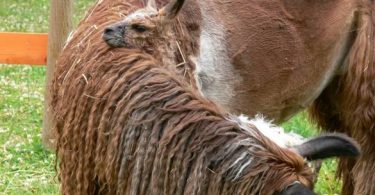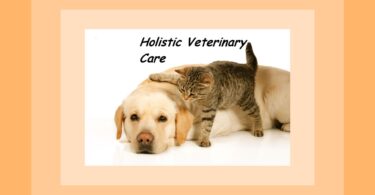The stumbling block to veterinary homeopathy is the smallness of the doses. How can such small doses produce any cure? Why should homeopathic medicines be kept away from sunlight and strong odours? These and similar questions are being asked by cattle owners. After being immersed in this system during the last 30 years, I treated many crossbred and native cows successfully with homeopathic medicine. Farmers saw their animals cured and felt comfortable and had confidence in me. Here are a handful of cases of animals successfully treated by homeopathy medicines:
1. DOWNER COW SYNDROME
The first case which I treated with homeopathy was in 1990. The cow was presented to me within two weeks of calving. She showed the symptoms of sternal recumbency, stiffness in the limbs, could get up only partially, able to get upon her fore legs, but not her hind legs and trying to crawl on the ground. She could rise on her fore legs but was falling for the want of power in her hind legs. She was looking very active, eating and drinking normally and having no fever.
The veterinarian who saw her earlier treated for hypocalcemia or milk fever with conventional allopathic medicines (calcium borogluconate, phosphorus, magnesium and potassium).
I prescribed 5 drops of Nux Vomica 3rd dilution, and two hours after 5 drops of Bryonia 3rd dilution, and so in alternation, and Conium 30, 10 globules three times a day at 4 hour intervals. On the second day in the evening she got up on her own. I prescribed Pulsatilla 30, 10 globules three times a day at 4 hour interval for 5 days. The cow was cured.
2. MILK FEVER OR PARTURIENT PARESIS
This is a metabolic disease that most commonly occurs within 72 hours after parturition. It is an extremely dangerous disease, sudden in its attack, and running a rapid course to a fatal termination, often in a few hours.
It occurs due to the depletion of the levels of ionized calcium in tissue fluids. Affected cows rapidly respond to parental calcium therapy. Clinical symptoms are restlessness, off feed, walks around with staggering gait and moans, her head down, loss of power in hind legs, accelerated breathing, muzzle hot and dry, pupils dilated, partially closed eye lids and abundant lacrimation. The animal falls partially down, gets up, unable to rise, head turned back to her sides, rectal temperature sub normal and cold extremities.
Aconite 30, 5 drops, and a half hour later Belladonna 30, 5 drops, and so in alternation till the animal recovered. At the commencement of the disease, when the cow is restless, and tosses her head about, foams at the mouth, and has dilated pupils, Nux vomica 30, 5 drops every 4 hours for three doses.
If the animal somewhat recovers, but there remains weakness of the hind legs and constipation, close the treatment with Sulphur 30, 5 drops once a day for 5 days.
In some cases, Milk Fever reappears in every lactation. For such cases and as a preventive medicine, I give Calcarea phosphorica 30 and Magnesium phosphoricum 30, 5 drops each once in a week from 5th month of pregnancy till calving.
3. BLOOD in MILK
Sometimes the milk from one or more teats is streaked with blood due to injury to udder/blood vessels. In such cases ca ombination of Arnica 30 and Ipecacuanha 30, 5 drops three times a day for 3 days is the best remedy that I know. I have cured a number of cases with this combination. If clotted blood is found in the milk, the combination of Arnica 30 and Bellis perennis 30, 5 drops three times a day for 3 to 5 days is preferred.
(Note: If the blood is due to injury to veins, I use Arnica and Ipecacuanha in combination; if it is due to the injury to artery, Arnica and Bellis perennis in combination is preferred).
If the blood is milk-rose colored and appears soon after calving, that usually ceases within 2-3days. But if it persists beyond this period it renders the milk unfit for human consumption. Though the cow is clinically normal, for an aesthetic sense, treatment may have to be continued. In such cases Bufo rana 30, 5 drops three times a day for 3 to 5 days is preferred.
4. THEILITIS
Inflamed teats / injured teat canals, thickened and hardened painful teats. It is more common in buffaloes after recent first calving. A combination of Arnica 30, Aurum Muriaticum Natronatum 30 and Thiosinaminum 30, 5 drops every 2 hours for 7 to 10 days with Arnica lotion externally will give good results. I have cured many cases with this treatment. This combination even gives good results in cases of cervicitis and in third eye lid tumor.
5. WARTS
Small cauliflower-like spiny growths appear on lips, around the eye lids and on teats. These are troublesome excrescences especially on the teats. Antimonium Crudum 200, 5 drops every alternate day and Thuja Occidentalis 200, 5 drops morning and evening for 15 days. Along with these I apply Thuja Mother tincture externally with a brush once a day which will soon remove them.
6. EPISTAXIS: NASAL BLEEDING
I was requested to immediately attend a cross bred (Holstein Friesian) cow which the farmer said was in “very serious” condition. When I first saw her, she was standing in the cow shed, bleeding profusely at the nostrils. There were lumps of clotted blood on the ground, she was throwing her head about and gazing with shocked eyes.
She was treated by a fellow veterinary surgeon with the available hemostatic but that failed to stop the bleeding. I examined her head and nose thoroughly for possible injuries, but could not find any injury or any foreign body. There was no incidence of fighting/falling. The body was a bit cold.
I gave 5 drops of Carbo vegetabilis 30, every half-hour for two hours, and then every hour. I saw the cow after twenty-four hours. Body temperature, breath, eyes and nostrils were normal with a wet muzzle. She was cured. Next day I could see relief in her face and also that of the farmer.
7. Vomition of Ruminal cud
Being a vet, I should not use the word ‘vomition’ in ruminants but I could not get the parallel word to it. The farmer requested me to come and see his most valuable Holstein Friesian cow, that was seized with vomitus of ruminal fluid for the last two days. I asked, “Have you consulted any veterinary surgeon?” he replied, ‘No, they just run up the bills, and then tell them me to consult the specialists. I then said, “I am not a specialist and this is new to me. Suppose I fail to cure it? Will you blame me? He said “No, no, there is nothing to fear, I trust you.” I went to see it.
Temperature, rumination was normal. There was disturbed respiration, she was moving her head from side to side, opening her mouth as if something was stuck and ruminal fluid was coming out profusely from its nostrils.
I gave 5 drops of Aconite 30, and one hour after, 5 drops of Bryonia 30, and so in alternation. I saw the cow after twenty-four hours. She was cured.







Very nice work Dr.Nijalingappa! Hopefully, this article and your experience will bring some significant changes in the field of veterinary practice.
Dr Nijalingappa,
You are doing a wonderful job of practicing homeopathy in large animals Keep it up Please try to publish papers on this subject Thanks